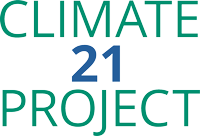Environmental Protection Agency (EPA)

The Environmental Protection Agency has a wealth of expertise, statutory authorities, and other tools to catalyze action to stem the climate crisis. EPA will need to quickly and deftly promulgate high-leverage climate rules, refocus agency programs and priorities, create new management and organizational processes, and harness partnerships to accelerate climate progress.
Because of the substantial range and volume of opportunities EPA has to address climate change, setting priorities and targeting resources will be one of an incoming Administrator’s most urgent immediate tasks. It will be especially urgent because EPA has experienced a prolonged, systematic assault to disable effective capacities, demoralize its highly expert and dedicated staff, undercut its own legal authorities, and betray the EPA’s core mission to protect human health and the environment. The Administrator will need to both communicate a compelling long-term vision on climate and quickly engage and build trust with the dedicated career leadership and expert staff to supply analyses, ideas, and approaches to achieve that vision. This will play a critical role in reinvigorating and rebuilding the Agency, as well as focusing its resources on addressing a monumental challenge to humanity.
Using its enforcement, regulatory, international, programmatic, and leadership tools, EPA can have major impact on all three pillars of the climate challenge: emissions reduction, climate diplomacy, and adaptation/resilience. Specifically, the agency can contribute major greenhouse gas emissions reductions in the transportation, energy, and industrial sectors as well as support international engagement. On adaptation, the Agency’s water program and regulatory authority can deliver hundreds of billions of dollars for projects that increase resiliency and improve public health. Finally, EPA can leverage the programs associated with contaminated land and emergency response for both emissions reduction and adaptation by working with developers on renewable energy siting and with state and local entities to address the impacts of climate change on contaminated properties.
The Administrator will need to set the balance among the competing interests that define a regulatory schedule: the desire to move quickly so that litigation can be finished in the first term, the importance of robust public engagement with diverse stakeholders, and the fundamental need to build strong technical support and well thought-out legal arguments in order to allow a successful defense and a durable legacy. While the climate crisis demands an aggressive approach, the constraints and risks of exercising regulatory authority—particularly with a more conservative Supreme Court—warrant a thoughtful assessment to define where to regulate and where to apply other leverage. In addition to traditional regulatory authorities, EPA’s toolbox includes non-regulatory approaches built around engaging, convening, partnering with, providing technical assistance to, and educating the public and private sector. The value of robust internal and public processes, both to establish durable policy and to enhance public trust in the agency, cannot be overstated. In some cases, vigorous public engagement—especially when complementing, aligning with, reinforcing, or anticipating regulatory authority—can accelerate progress.
Lead Authors


